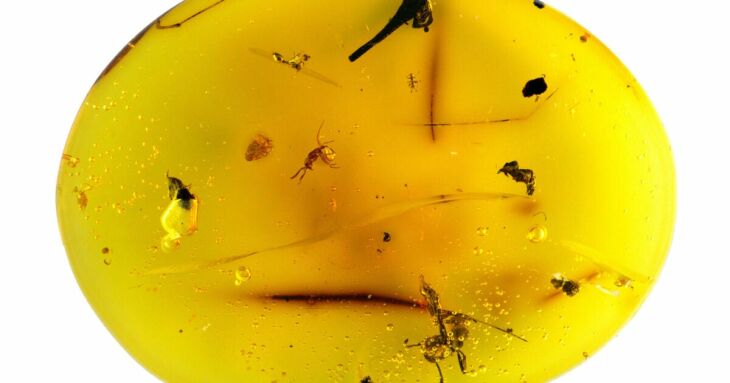The researchers from Harvard and the New Jersey Institute of Technology who made the discovery describe their finding in a new paper in the Proceedings of the Royal Society B. The ultra-rare fossil can help shed new light on these ancient animals and provide new evolutionary insight into how the 1,300 tardigrade species that exist today evolved.
The specimen is the first water bear fossil ever recovered from the Cenozoic era, which started 66 million years ago and encompasses the planet’s current geological era. The researchers believe this is the best-imaged tardigrade fossil to date. In fact, they were able to describe microscopic details on parts of the mouth and needle-like claws that are about 20 to 30 times finer than a human hair. They were also able to get an unprecedented look at the internal anatomy of its foregut, which played the key role in identifying the fossil as a new genus and species.
“We could see it had this unique foregut organization that warranted for us to formalize a new genus within this extant group of tardigrade superfamilies,” said Marc A. Mapalo, a Ph.D. candidate who does his work in the Department of Organismic and Evolutionary Biology, Harvard’s Graduate School of Arts and Sciences, and is lead author of the study. “We saw characters that are not observed in extant species, but are observed in the fossils. This helps us understand what changes in the body occurred across millions of years.”
The researchers were able to examine these distinct anatomical features with a confocal laser microscope, a piece of equipment that uses a laser instead of visible light to peer into the specimen and produce a high-quality image. Usually, it is used to see biological and molecular processes such as cell division.

“Using this high-powered technique that is usually employed for studying cell biology, it was possible to obtain extremely detailed anatomical information,” said Javier Ortega-Hernández, an assistant professor in OEB and curator of invertebrate paleontology in the Museum of Comparative Zoology. “We saw the whole animal in way better detail than previously possible using conventional light microscopy.”
The researchers called the new species Paradoryphoribius chronocaribbeus. The name uses the Greek word for time, “chrono,” and refers to the Caribbean region where it was found, “caribbeus.” The new species is a relative of the modern living family of tardigrades known as Isohypsibioidea.
The other two fully described unequivocal tardigrade fossils are Milnesium swolenskyi and Beorn leggi, both known from Cretaceous-age amber in North America. This makes the new Dominican species the first water bear fossil to be found outside that region.
Co-author Phillip Barden from the New Jersey Institute of Technology introduced the fossil to Ortega-Hernández and Mapalo in 2019 after visiting the Museum of Comparative Zoology as a guest speaker. Mapalo, who was new to the lab, is a specialist in tardigrades and took the lead in analyzing the fossil using confocal microscopes in the Harvard Center for Biological Imaging.
Mapalo and Ortega-Hernández hope their success with the confocal microscope will inspire other researchers to use it to examine their own amber samples. The pair will also continue to employ the technology to study other tardigrades fossils trapped in amber.
Meanwhile, Mapalo has written a song (as one does) to celebrate number three.















